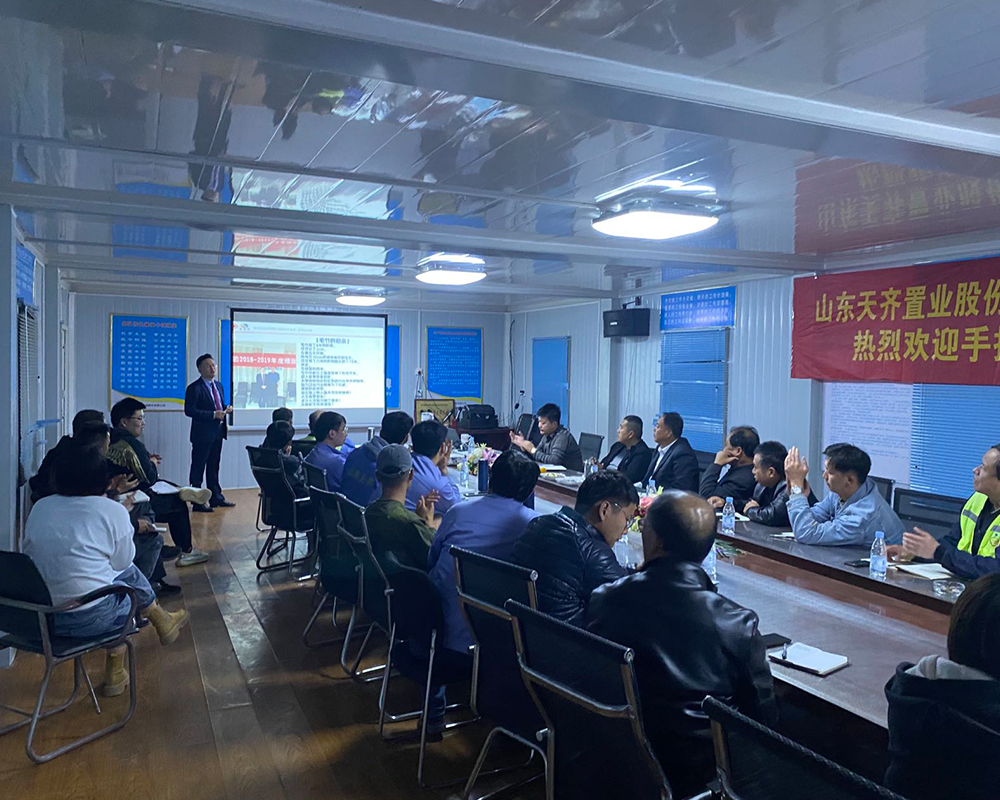
新闻资讯NEWS AND INFORMATION
山东股权激励落地:一文看懂企业股权设计的基本概念、原则与结构!
发布时间:2025-10-09 来源:http://www.lushangyun.com/
创业是一个充满各类挑战的长期过程,恰逢近年来疫情反复、经济下行的大环境,初创企业创业和发展之路可谓是荆棘丛生。
Entrepreneurship is a long-term process full of various challenges, coinciding with the fluctuating epidemic and economic downturn in recent years. The path of entrepreneurship and development for start-up enterprises can be described as full of thorns.
对于初创企业及其创始人而言,从企业实际场景出发,巧用法律工具设计合理的股权架构,可以将风控前置,规避企业发展阻碍;
For startups and their founders, starting from the actual situation of the enterprise, skillfully using legal tools to design a reasonable equity structure can prioritize risk control and avoid obstacles to the development of the enterprise;
同时可以实现对企业的有效控制与治理,并为企业熬过经济寒冬后进入资本市场做准备。
At the same time, it can achieve effective control and governance over enterprises, and prepare them to enter the capital market after surviving the economic winter.
为此,我们拟推出系列文章,总结律师实务经验,重点解析各类企业通用的股权设计法律工具,并从从初创企业的实际需求出发,帮助创始人防范股权风险,提升创业企业市场竞争力。
To this end, we plan to launch a series of articles summarizing the practical experience of lawyers, focusing on analyzing the common legal tools for equity design in various enterprises, and starting from the actual needs of start-up enterprises, helping founders prevent equity risks and enhance the market competitiveness of start-up enterprises.
作为系列文章开篇,本文拟梳理企业股权设计的基本概念和原则,并结合案例重点解读企业股权设计结构类型。何为“股权设计”股东权利简称股权,是指股东基于对公司出资而产生的权利集合,是一种不同于债权和物权所有权的民事权利。
As the beginning of the series of articles, this article intends to outline the basic concepts and principles of corporate equity design, and focus on interpreting the structural types of corporate equity design through case studies. What is "equity design"? Shareholder rights, abbreviated as equity, refer to the collection of rights generated by shareholders based on their contributions to the company. It is a civil right different from debt and property ownership.
根据《公司法》和《证券法》等法律法规,公司股权可以划分为财产权和管理权,又可以划分为自益权和共益权。
According to laws and regulations such as the Company Law and the Securities Law, the equity of a company can be divided into property rights and management rights, as well as self benefit rights and co benefit rights.
财产权是指股东基于投资所获得的经济利益,管理权指作为股东参与公司的经营管理的权利。
Property rights refer to the economic benefits obtained by shareholders based on investments, while management rights refer to the right to participate in the operation and management of a company as shareholders.
自益权是股东为了自己的利益而行使的权利,共益权指股东为了公司全体股东的共同利益兼为了自己的利益而行使的权利。
Self benefit right refers to the right exercised by shareholders for their own interests, while co benefit right refers to the right exercised by shareholders for the common interests of all shareholders of the company and for their own interests.
公司股权设计,就是指以股东股权比例为基础,对股东会及董事会的职权、议事规则和程序进行系统性调整而形成的公司股东权利结构体系。
The equity design of a company refers to the systematic adjustment of the powers, rules of procedure, and procedures of the shareholders' meeting and board of directors based on the proportion of shareholder equity, forming the shareholder rights structure system of the company.
良好的公司股权结构体系,可以平衡创始人、合伙人、员工、投资人之间的权利、责任和利益,有利于公司的控制权和经营稳定,也有利于公司引入投资人以及在资本市场获得融资。
A good corporate equity structure system can balance the rights, responsibilities, and interests of founders, partners, employees, and investors, which is beneficial for the company's control and operational stability, as well as for introducing investors and obtaining financing in the capital market.
实操中,设计公司股权主要参考的8条关键股权比例线如图1所示:
In practice, the 8 key equity ratio lines that the design company mainly refers to for equity are shown in Figure 1:
图中右半部分1%对应的代位诉讼权、3%对应的临时提案权、5%对应的重大股权变动警示线、以及30%对应的上市公司要约收购线4条比例线都只适用于上市的股份有限公司。
The four proportional lines in the middle right half of the figure, namely 1% for subrogation rights, 3% for temporary proposal rights, 5% for major equity change warning lines, and 30% for listed company tender offer lines, are only applicable to listed limited liability companies.
左半部分4条关键比例线同时适用于有限责任公司、股份有限公司,也是大股东或实际控制人最看中的股权比例线。
The four key proportion lines in the left half are applicable to both limited liability companies and joint-stock limited companies, and are also the equity proportion lines that major shareholders or actual controllers value the most.
公司股权结构按集中度可以分为高度集中型、适度集中性以及分散性三类。
The equity structure of a company can be divided into three categories based on concentration: highly concentrated, moderately concentrated, and dispersed.
高度集中型股权结构中,又可以细分为绝对控股型与相对控股型。
In a highly concentrated equity structure, it can be further divided into absolute control type and relative control type.
绝对控股型股权结构是指创始人持有公司股权不少66.7%,即持有2/3以上股权。
The absolute controlling equity structure refers to the founder holding no less than 66.7% of the company's equity, that is, holding more than 2/3 of the equity.
绝对控股股东对公司的一般事项及重大事项均拥有决策权。
The absolute controlling shareholder has decision-making power over both general and major matters of the company.
相对控股型是指控股股东持有公司股权的50%以上,对于一般事项拥有决策权,同时,对于重大事项也具有一票否决权。
Relative control type refers to the controlling shareholder holding more than 50% of the company's equity, having decision-making power over general matters, and also having veto power over major matters.
在适度集中性股权结构中,大股东的股份在50%以下,不低于34%,当大股东拥有34%股权时,其他股东就不能达成2/3的投票率,这样即使没有绝对的控制权,也对公司的重大事项决策拥有一票否决权。
In a moderately centralized equity structure, the major shareholder's shares are less than 50% and not less than 34%. When the major shareholder owns 34% of the shares, other shareholders cannot achieve a 2/3 voting rate. Therefore, even without absolute control, they still have one veto power over major decisions of the company.
随着股权比例的降低,大股东对公司的控制权也在减弱,各个股东之间能够相互制约,但有时也会形成对重大事项难以作出有效决策的情形。
With the decrease of equity ratio, the control of major shareholders over the company is also weakening, and various shareholders can constrain each other, but sometimes it can also lead to situations where it is difficult to make effective decisions on major issues.
10%的股权比例也是公司控制权的一个重要临界点,拥有公司10%股权的股东有权提议召开股东临时会议,在董事和监事都不履行召集股东会职责时可以自行召集和主持,在某种程度上拥有对公司重大决策的话语权。
The 10% equity ratio is also an important critical point for company control. Shareholders who own 10% of the company's equity have the right to propose the convening of an extraordinary shareholders' meeting. When directors and supervisors fail to fulfill their duties of convening the shareholders' meeting, they can convene and preside over it on their own, and to some extent have the right to speak on major decisions of the company.
此结构下,在高度分散型股权结构下,一般单个股东持股比例在10%以下,公司没有单一大股东或实际控制人。股权设计原则图2概括了公司股权结构影响公司治理的逻辑关系。
Under this structure, in a highly dispersed equity structure, a single shareholder generally holds less than 10% of the shares, and the company does not have a single major shareholder or actual controller. The equity design principle diagram 2 summarizes the logical relationship between a company's equity structure and corporate governance.
公司股权结构设计必须首先考虑企业的具体类型,包括企业的性质、所在行业和所处生命周期。
The design of a company's equity structure must first consider the specific type of enterprise, including its nature, industry, and lifecycle.
公司股权结构以股东股权比例调整为基础,通过股东会及董事会的职权、议事规则和程序决定企业内部组织架构,从而影响企业对内的治理水平和对外的经营业绩。
The equity structure of a company is based on the adjustment of shareholder equity ratios, and the internal organizational structure of the enterprise is determined through the powers, rules of procedure, and procedures of the shareholders' meeting and the board of directors, thereby affecting the internal governance level and external business performance of the enterprise.
(图2:公司股权结构与治理的逻辑关系)
(Figure 2: Logical Relationship between Corporate Equity Structure and Governance)
企业按照不同经营所有制可以划分为民企、国企、混合所有制企业等,也可以分为上市公司和非上市公司。
Enterprises can be classified into private enterprises, state-owned enterprises, mixed ownership enterprises, etc. according to different business ownership, as well as listed companies and non listed companies.
不同所有制度企业作股权设计的限制条件不同。
The restrictions on equity design vary among enterprises with different ownership systems.
以国有企业为例,国有股权转让、激励等股权变动因为面临严格的国有资产评估审计要求,相比于普通民企而言,其股权结构设计的限制较多。
Taking state-owned enterprises as an example, the transfer of state-owned equity, incentives, and other equity changes face strict requirements for state-owned asset evaluation and auditing. Compared to ordinary private enterprises, their equity structure design has more restrictions.
不同于非上市公司,上市公司股权结构的设计和变动还必须考虑股票减持规则、披露规则、质押规则等资本市场系列规则的重大影响。
Unlike non listed companies, the design and changes of equity structure in listed companies must also consider the significant impact of capital market series rules such as stock reduction rules, disclosure rules, and pledge rules.
股东为公司带来资本、自然资源、技术和知识、市场资源、管理经验等企业经营发展所需资源要素,不同行业、不同资源要素主导的企业作股权设计的股东资质不同,对应的出资比例也应作相应调整。
Shareholders bring capital, natural resources, technology and knowledge, market resources, management experience and other necessary resource elements for the operation and development of the company. Enterprises dominated by different industries and resource elements have different shareholder qualifications for equity design, and the corresponding contribution ratio should also be adjusted accordingly.
以科创企业为例,不同于传统“劳动密集型”和“资本密集型”企业,“科技资本”决定这类公司的命运,股东的知识产权和技术能力是公司股权结构设计的决定因素。
Taking science and technology innovation enterprises as an example, unlike traditional "labor-intensive" and "capital intensive" enterprises, "technology capital" determines the fate of such companies, and shareholders' intellectual property and technological capabilities are the determining factors in the design of the company's equity structure.
处于不同生命周期的企业对公司股权结构设计的需求也不同,处于初创和成长期间的企业股权结构和公司治理都在动态发展变化,有大量股权结构设计和完善方面需求,这点有别于处在成熟、转型或者衰退期间的企业需求。
Enterprises in different life cycles also have different demands for the design of corporate equity structure. The equity structure and corporate governance of enterprises in the start-up and growth stages are dynamically developing and changing, with a large number of demands for equity structure design and improvement, which is different from the demands of enterprises in the mature, transformation or decline stages.
不同类型企业需求设计公司股权结构时需要遵循几条一般性原则,我们归纳起来最重要的有四点:
There are several general principles that need to be followed when designing a company's equity structure for different types of enterprises. We have summarized the four most important ones:
1、资源互补、理念相近。
1. Complementary resources and similar concepts.
股东之间企业经营理念和价值观应当相近,互相信任,但是股东之间的资源能力要互补,尽量不要重合,有利于企业内部权责划分。
Shareholders should have similar business philosophy and values, trust each other, but their resource capabilities should complement each other and try not to overlap, which is conducive to the division of responsibilities within the enterprise.
2、预留股权、动态调整。
2. Reserved equity and dynamic adjustment.
包括为公司核心员工、潜在合伙人、外部投资机构预留股权池,为吸引新的人才、资源和后续发展做准备。
This includes reserving equity pools for core employees, potential partners, and external investment institutions to prepare for attracting new talent, resources, and future development.
3、核心股东、比例梯次。
3. Core shareholders and proportional hierarchy.
特别是在发展早期,企业要有一个核心股东作为实际控制人并担任重要职务去决策拍板,避免议而不决导致公司治理僵局,并结合上文提及的公司股权8条重要比例线去设计明显的股权架构梯次。
Especially in the early stages of development, a company should have a core shareholder as the actual controller and hold an important position to make decisions and avoid governance deadlock caused by indecision. In addition, a clear equity structure hierarchy should be designed based on the eight important proportion lines of the company's equity mentioned earlier.
4、简单明晰,排除不稳定因素。
4. Simple and clear, excluding unstable factors.
特别是对于股东人数不是特别多的初创公司而言,要慎用隐名股东、干股等特殊股权结构。股权结构类型公司股权结构常见类型包括传统的一元股权结构、权利分离的二元股权结构、以及综合利益安排的多元股权结构。
Especially for start-up companies with a relatively small number of shareholders, special equity structures such as anonymous shareholders and dry shares should be used with caution. The common types of equity structures in companies include traditional unitary equity structures, binary equity structures with separated rights, and diversified equity structures with comprehensive interest arrangements.
一元股权结构是最传统、最简单、同时也是最普适的股权结构,具体是指股东表决权或投票权、分红权等系列权利与其出资比例保持完全一致。
The one yuan equity structure is the most traditional, simple, and universal equity structure, which specifically refers to a series of rights such as shareholder voting rights, dividend rights, etc. that are completely consistent with their investment ratio.
在一元股权结构中,所有股东的权利差别全部来自于股东之间的出资比例差异。
In a unitary equity structure, all differences in shareholder rights arise from differences in the proportion of capital contributions between shareholders.
二元股权结构是指股权权利在股权比例、股东表决权或投票权、分红权等系列权利之间作差异化安排,进行分离设计。
The dual equity structure refers to the differentiated arrangement and separation design of equity rights among a series of rights such as equity ratio, shareholder voting rights or voting rights, dividend rights, etc.
二元股权结构的设计需要考虑有限责任公司和上市公司的区别。
The design of a binary equity structure needs to consider the differences between limited liability companies and listed companies.
对有限责任公司而言,依据公司法第42条规定可以在公司章程中约定同股不同权的二元股权结构。
For a limited liability company, according to Article 42 of the Company Law, a binary equity structure with the same shares but different rights can be stipulated in the company's articles of association.
[2]有限责任公司的股东出资比例和持股比例是否一致属于股东意思自治范畴,可以自由约定。
[2] Whether the proportion of capital contribution and shareholding of shareholders in a limited liability company is consistent belongs to the category of shareholder autonomy and can be freely agreed upon.
司法实践中,公司章程关于有限责任公司的股东出资比例与表决权比例不一致,或者出现股东放弃表决权,只保留所有权和分配权的特别约定都是合法有效的。
In judicial practice, special provisions in the company's articles of association regarding the inconsistency between the proportion of shareholder contributions and voting rights in a limited liability company, or the occurrence of shareholders giving up their voting rights and only retaining ownership and distribution rights, are all legal and effective.
[2][3]需要注意的是,为防止大股东侵犯小股东/多数股东侵犯少数股东权利,只有有限责任公司全体股东同意才可以约定同股不同权的二元股权结构。
[2] [3] It should be noted that in order to prevent major shareholders from infringing on the rights of minority shareholders/majority shareholders, only with the consent of all shareholders of a limited liability company can a binary equity structure be agreed upon with the same shares but different rights.
除了在公司章程中加以约定,各股东还可以在股东协议中约定通过股东会方式对相应股权结构和分配方式进行决议,全体股东表决通过后即为合法有效。
In addition to being stipulated in the company's articles of association, each shareholder can also agree in the shareholder agreement to adopt resolutions on the corresponding equity structure and distribution methods through a shareholders' meeting. Once all shareholders vote and approve, it becomes legal and valid.
对于上市公司而言,可以设立AB股的方式实现同股不同权的二元股权结构,但要符合上市地的监管规定。
For listed companies, it is possible to establish AB shares to achieve a dual ownership structure of the same share but different rights, but it must comply with the regulatory requirements of the listing location.
以美股众多科技公司为例,这些企业发展高度依赖创始人能力,需要将决策权保留给创始人,将分红权分配给其他合伙人和投资人时,就需要采用AB股方式实现上市融资。
Taking many technology companies in the US stock market as an example, their development highly relies on the founder's ability, and they need to retain decision-making power to the founder and distribute dividend rights to other partners and investors. Therefore, they need to use AB shares to achieve IPO financing.
京东在美股上市就为创始人团队设计了具有高度表决权的B类股票(优先股)来维持他们对公司对决策和控制,包括公众股东在内的其他股东则持有A类股票(普通股),各轮融资过后,投资机构的投票权比例随股权比例下降而下降,而创始人团队的投票权比例不降反升,具体如表1所示。
JD.com designed Class B stocks (preferred stocks) with high voting rights for the founding team to maintain their decision-making and control over the company upon its listing on the US stock market. Other shareholders, including public shareholders, hold Class A stocks (common stocks). After each round of financing, the voting rights of investment institutions decrease as the equity ratio decreases, while the voting rights of the founding team increase instead of decrease, as shown in Table 1.
近年来,中国境内的科创板和创业板也相继设置了表决权差异安排制度,允许符合条件的拟上市企业发行具有特别表决权的类别股份[4]。
In recent years, the Science and Technology Innovation Board and the Growth Enterprise Market in China have also successively established a voting rights differential arrangement system, allowing eligible prospective listed companies to issue shares with special voting rights.
多元股权结构是指将公司的股东分为创始人、合伙人、员工、投资人等多个利益关联主体,并对这些主体的股权权利作动态和整体规划的股权结构。
A diversified equity structure refers to the division of a company's shareholders into multiple stakeholders such as founders, partners, employees, and investors, and the dynamic and overall planning of their equity rights.
多元股权结构充分考虑各类利益关联主体对企业的贡献等多重因素,在考虑企业具体类型的基础上,以股东股权比例为基础,主动运用多种法律工具,对股东会及董事会的职权、议事规则和程序进行系统性调整,平衡创始人、合伙人、员工、投资人等多个利益关联主体之间的权利、责任和利益。
The diversified equity structure fully considers multiple factors such as the contributions of various stakeholders to the enterprise. Based on the specific type of enterprise and the proportion of shareholder equity, it actively uses various legal tools to systematically adjust the powers, rules of procedure, and procedures of the shareholders' meeting and the board of directors, balancing the rights, responsibilities, and interests of multiple stakeholders such as founders, partners, employees, and investors.
本文由 山东股权激励落地 友情奉献.更多有关的知识请点击 http://www.lushangyun.com/ 真诚的态度.为您提供为全面的服务.更多有关的知识我们将会陆续向大家奉献.敬请期待.
This article is about the implementation of equity incentives and friendship contributions in Shandong For more related knowledge, please click http://www.lushangyun.com/ Sincere attitude To provide you with comprehensive services We will gradually contribute more relevant knowledge to everyone Coming soon.
本站声明
本网站为非营利性网站,旨在宣扬股权知识,交流职业学习心得。网站内部分文章来自其它网站,只做交流学习之用。相应的权力均属于原权 力人,如权利人认为不妥,请来电来函说明,本网站随既停止或使用,谢谢合作! 13698613138
13698613138
微信公众号

扫码获知更多知识

抖音二维码

截屏,微信识别二维码